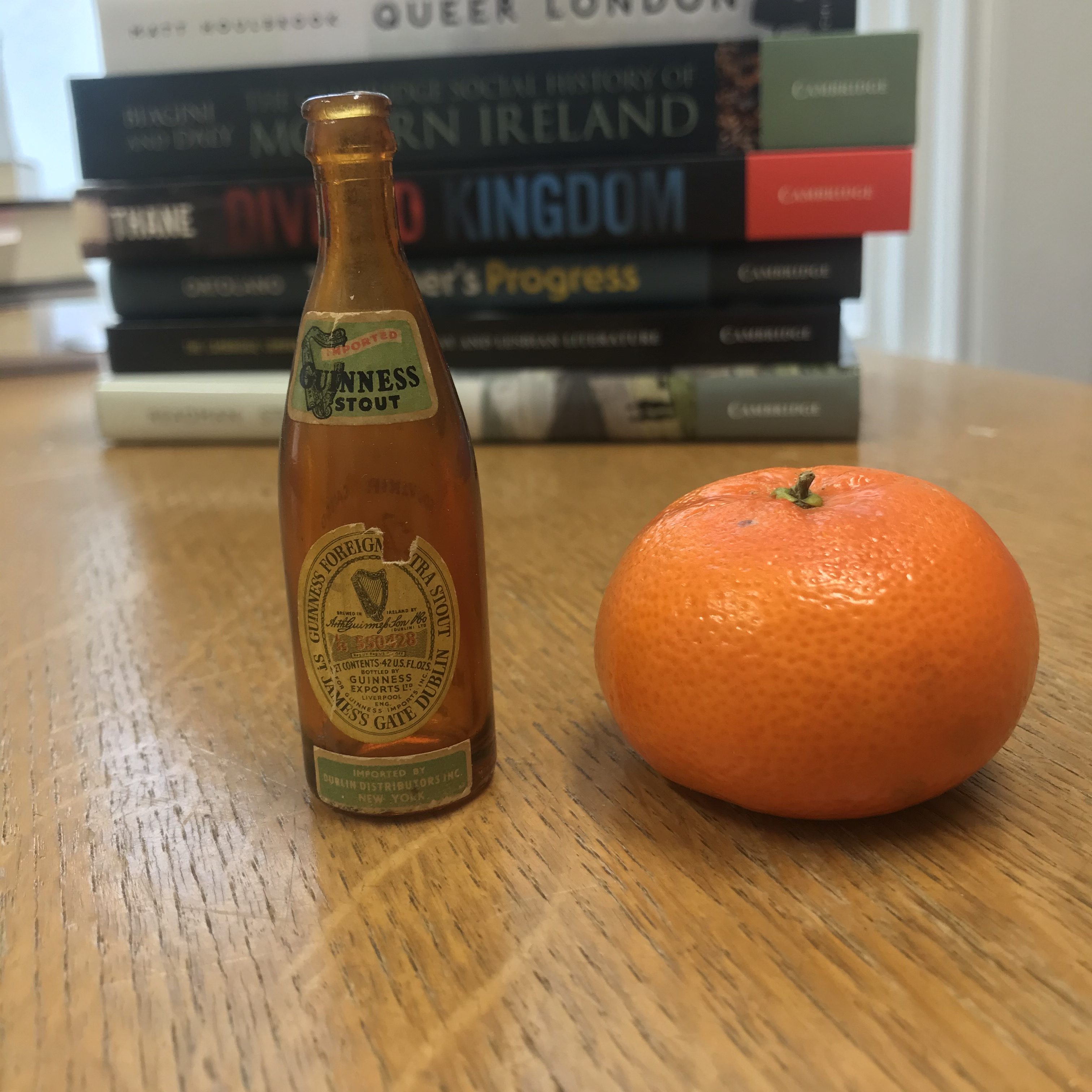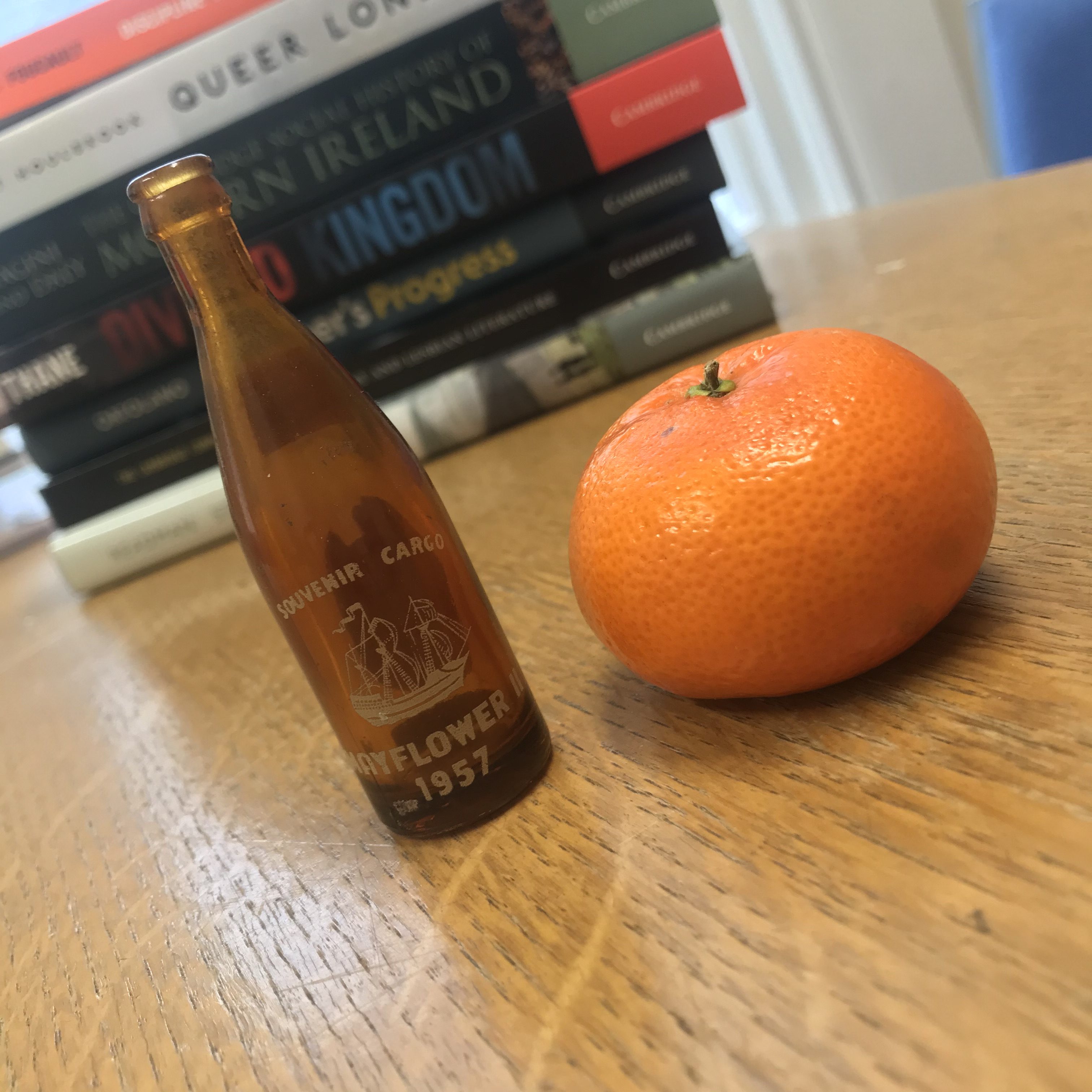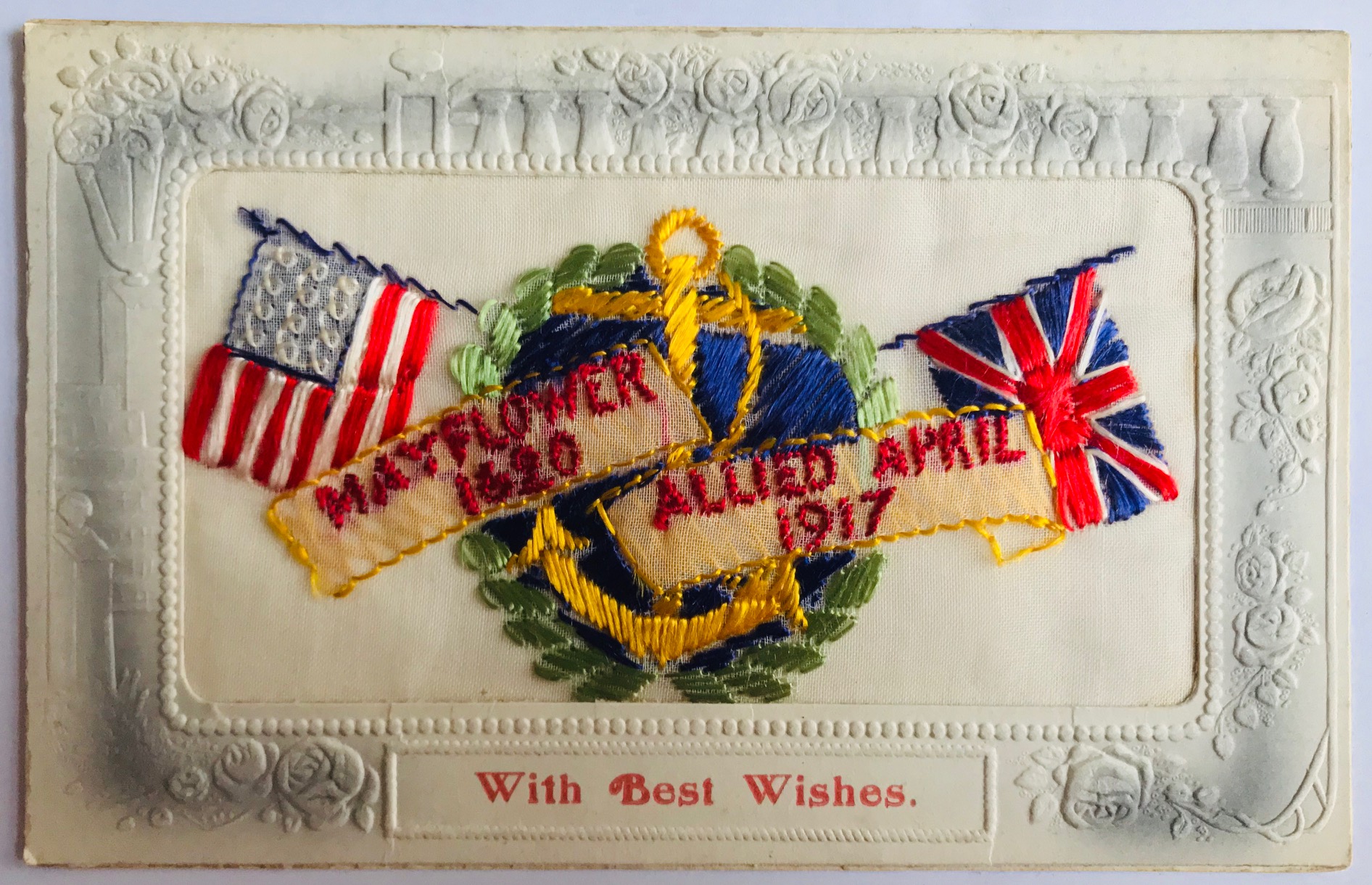One of the most fascinating and relatively recent expressions of Mayflower-mania came with the building and sailing of a ‘replica’ of the ship in 1957. Dubbed the ‘Mayflower II’, the idea for the project came from Warwick Charlton, a then London-based public relations expert who had fond memories of serving alongside Americans in the Second World War. Like the 1917 commemorative postcard we recently featured, the Mayflower II was a project conceived primarily to support Anglo-American relations – this time, in the guise of ensuring ‘the free world’ against the backdrop of the Cold War. We are currently researching the Mayflower II – from the idea to afterlife – and will be sharing a much longer piece soon. In the meantime, to ‘whet your appetite’, the below is a miniature souvenir Guinness bottle – next to a tangerine for scale – that was taken on board the ship (along with many other examples of industry, manufacture and commerce from the ‘British Isles’). When I bought this bottle on eBay, for a price I’m not willing to admit(!), I thought it was full-size… a cautionary tale that sometimes things are not always what they seem – much like the cultural afterlife of the Mayflower!
Randal Charlton, son of Warwick, has recently written a book about his father: The Wicked Pilgrim. You can pick up a copy here



